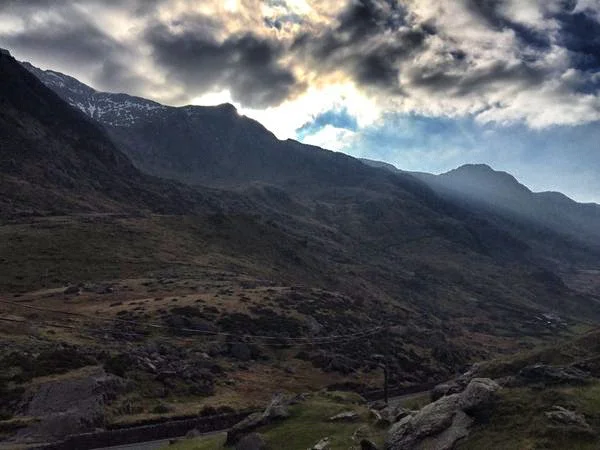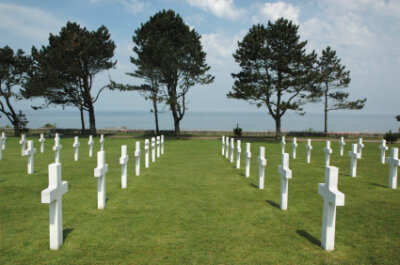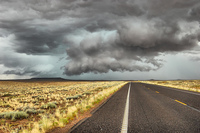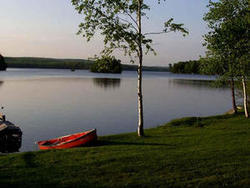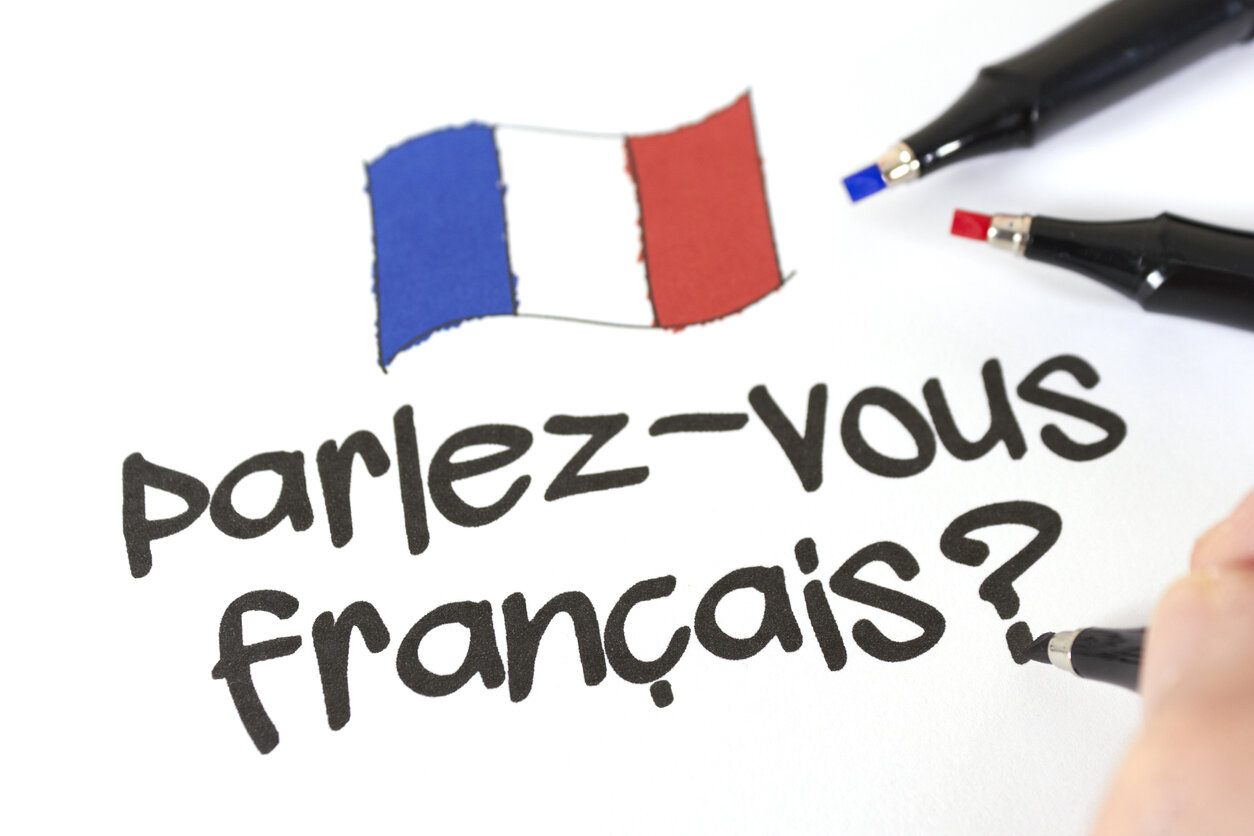When writer Joe Shaw, a hyperconnected traveler, arrived in Snowdonia National Park in north Wales, he discovered epic landscapes, adventurous travelers, a dazzling night sky, but no phone or internet service. None. Zip. Nada. Dream getaway or vacation nightmare?
All in travel writing
I’m an author, Nancy King—no relation to Stephen King—but if I were, this story might be different. As it is, I travel to independent bookstores in nearby cities, each time hoping I will find a room full of people waiting to hear what I have to say about my new novel, Changing Spaces, and wanting to buy my books.
In one bookstore, a few people wander up to the display, pick up copies of my books and thumb through the pages. This is promising, I think. There aren't many people, but at least looking and thumbing are a prelude to buying. I grin broadly when a petite, well-dressed woman approaches me. “Are you the author?”
TRAVELING ALONE: 25 Very Very Short Stories
We challenged YourLifeIsATrip.com writers to tell us their best solo travel tales in 25 words or less. But don’t let the small size fool you — at the heart of each of these very very short essays is an unforgettable adventure. Sometimes it’s crazy, funny, scary, surprising, meaningful, or disastrous, but never more than 25 words. Dive in and join the fun..
by Elyn Aviva
Unwittingly, my husband, Gary, and I walked into an alternative virtual reality. We were surrounded by aliens who looked human. Aliens who spoke a language that sounded like English, but their vocabulary was subtly different. Words like “ROI,” “SEO,” and “hashtags” peppered their speech.
And they communicated with odd body language. Although they seemed to be talking to each other, they rarely made eye contact. Instead, they stared intently at small, vibrating, hand-held devices with brightly lit screens. And they kept tapping these strange pieces of equipment, sometimes with one finger, sometimes with several, or sometimes with their opposable thumbs. Occasionally, their eyes flicked up from the screen to glance around. But only for a moment.
Into what strange world had we wandered? An international travel bloggers conference in Girona, Catalonia, Spain. It sounded appealing in the invitational email: inexpensive, educational, entertaining—and it included a visit to a castle. AND it was taking place in my adopted home town of Girona, so why not?
In this alternative universe, everything was baffling, including the meaning of words I thought I knew. “Relevant” meant “meeting your fans where they’re at” and “content” meant maximizing your Google indexability (the number of searchable key words in your website or blog). “Service” writing” meant providing information and the rush to publish meant some bloggers are posting not weekly but daily or even hourly. A popular book author was called a “long-form print guy.” “Engagement” referred to how actively engaged your Facebook (or blogsite) fan base is, not to a diamond ring.
by Jules Older
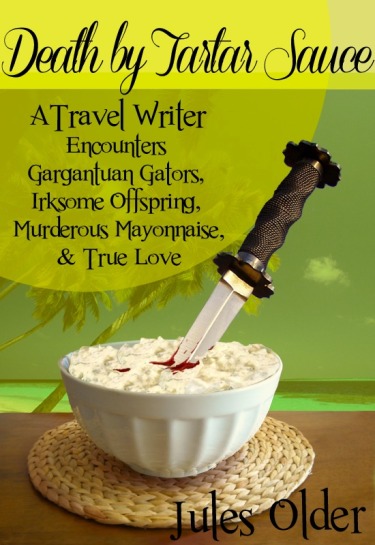
Along with four 20-year-olds — I think they were history students — Willow and I climbed aboard the bus — the psychedelic VW bus — owned and operated by tour leader, Hippie Bob.
H.B. was in his fifties. He wore a long, graying ponytail and those little, round John Lennon glasses. He had on enough love beads to serve as a flotation device, and he smelled of a familiar herb; maybe it was patchouli. Maybe not.
Just the guy to teach my daughter modern American history.
“Hippies like me came out to the Haight for the Summer of Love,” Hippie Bob began. “We lived in communes in big old houses like the ones on this street.”
“When was the Summer of Love, Bob?” Willow asked.
“In the sixties, man. Definitely in the sixties. And call me Hippie Bob. That’s my handle, you dig?”
Willow looked puzzled. “I, uh, dig, but when in the sixties, Bo — Hippie Bob?”
“I dunno. We weren't all hung up with numbers and dates and stuff back then. If it feels good, do it.”
I piped up, trying to help the history lesson progress. “Wasn’t that 1967, Hippie Bob? And weren't there many famous rock stars and other cultural icons living right here in the Haight?”
Eyelids closed, I postpone viewing the new day. I linger in dreamtime until a familiar honking breaks the morning stillness in Benicia, California, a waterside community thirty miles north of San Francisco. The world outside my window rests under the great Pacific flyway, the north-south path of North American migratory birds.
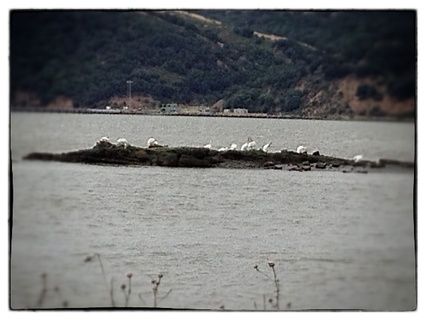 Eyes wide open; I peer through the bedroom window in time to see Canada geese, a trio in flight, noisily bound elsewhere, calling to one another, beaks pointed, necks stretched; chests lifted upward, wings flapping hard. I track their flight over Southampton Bay, the cove on Benicia’s west end. The pale gray clouds of the marine layer blanket the opposite shore of the Carquinez Strait. This wide watery ribbon funnels fully half of California’s water drainage through a deep channel on its way to the Pacific Ocean.
Eyes wide open; I peer through the bedroom window in time to see Canada geese, a trio in flight, noisily bound elsewhere, calling to one another, beaks pointed, necks stretched; chests lifted upward, wings flapping hard. I track their flight over Southampton Bay, the cove on Benicia’s west end. The pale gray clouds of the marine layer blanket the opposite shore of the Carquinez Strait. This wide watery ribbon funnels fully half of California’s water drainage through a deep channel on its way to the Pacific Ocean.
Cuddling under a soft, embroidered, cotton quilt, while I marvel at the waterfowl, Franz Kafka’s translated words come to mind.
You do not need to leave your room.
Remain sitting at your table and listen.
Do not even listen, simply wait, be quiet, and solitary.
The world will freely offer itself to you to be unmasked,
it has no choice, it will roll in ecstasy at your feet.
The universe blesses Benicia with a significant year-round presence of waterfowl—mallards, coots, the great blue heron, and snowy egret. Spring brings an upswing in activity: nesting and the annual migration of some birds to points north.
Honoring America's Fallen Soldiers in Normandy
by Roy Stevenson
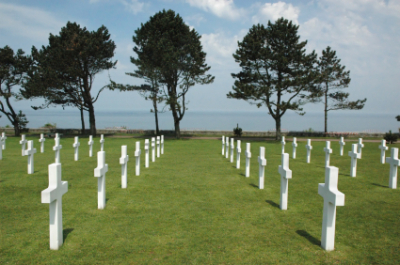 American Military Cemetery, Colleville, Normandy, FranceThe view from the top of the high, soft, sand dunes next to the American Military Cemetery at Colleville, Normandy, is great today. It’s a bright clear blue sky and I can see for miles. French fishing trawlers churn through the choppy, deep blue water, miles out to sea, leaving wide foaming wakes behind them. Gazing down across the long, deserted flat white expanse of Omaha Beach, I can see where the olive uniformed American soldiers debarked their landing craft, to shelter behind steel tetrahedrons, or sprint up the beach on D-Day, June 6, 1944.
American Military Cemetery, Colleville, Normandy, FranceThe view from the top of the high, soft, sand dunes next to the American Military Cemetery at Colleville, Normandy, is great today. It’s a bright clear blue sky and I can see for miles. French fishing trawlers churn through the choppy, deep blue water, miles out to sea, leaving wide foaming wakes behind them. Gazing down across the long, deserted flat white expanse of Omaha Beach, I can see where the olive uniformed American soldiers debarked their landing craft, to shelter behind steel tetrahedrons, or sprint up the beach on D-Day, June 6, 1944.
Descending the sand dunes, I walk the long 500 meters down the gently sloping beach to the water’s edge. It’s dead low tide. I turn around, looking back up towards the dunes. I’m amazed at how far away they are. They would seem like they were miles away, especially to a young soldier armed to the teeth and heavily weighed down with equipment.
It must have been terrifying trying to sprint up the beach into the teeth of a hailstorm of machine gun, rifle, and mortar fire. Of the soldiers in the first few D-Day landing craft, 90% didn’t even make it up the beach. In my mind’s eye I fleetingly see chaos, patches of red blood-drenched sand, and a flickering image of a young soldier in a soaked green uniform. “I must have seen “Saving Private Ryan” once too many times”, I think self-consciously.
Deep in thought, I trudge back up the steep, uneven sand dunes to the American Military Cemetery and walk along row upon row of perfectly aligned white crosses, on the vast 172-acre, smooth, emerald green-grassed plateau. The 9,387 crosses are a stupefying sight. They radiate outwards in perfectly straight lines no matter what angle they are viewed from.
Here’s what I did before sitting down to write an article today.
 I got a fresh cup of coffee. I re-read an assignment I had for school, and then printed it out (perhaps it looks less ominous on real paper). I looked online to see if airfare to Europe had come down at all. I asked my daughter what she thought she was good at, then what she thought I was good at. “ You’re good cook. And you’re good at writing.” Oh yeah, writing, I need to do that today. But first I sorted laundry, made the other half of the bed, and wrote out a grocery list, the latter task being somewhat auspicious. I did write the grocery list after all. I patted myself on the back.
I got a fresh cup of coffee. I re-read an assignment I had for school, and then printed it out (perhaps it looks less ominous on real paper). I looked online to see if airfare to Europe had come down at all. I asked my daughter what she thought she was good at, then what she thought I was good at. “ You’re good cook. And you’re good at writing.” Oh yeah, writing, I need to do that today. But first I sorted laundry, made the other half of the bed, and wrote out a grocery list, the latter task being somewhat auspicious. I did write the grocery list after all. I patted myself on the back.
Yes, I am a good mom, and a good cook, and I’d like to think I am a good travel writer (I’m certainly good at traveling). But what I’m really expert at is procrastination (gasp), or what I like to call, my Inertia Games.
Newton’s Law of Motion says, in some form, “In the absence of force, a body at rest (mine for the sake of argument), will stay at rest, and a body moving at constant velocity in a straight line continues doing so indefinitely.” Inertia. Inactivity. Yawn. In non-physicist English this means that until a fire is lit under my ass, nothing is going to happen. The game becomes discovering the flame that will light the match.
Why do I procrastinate? I know there are a lot of you who think you know the answer. If I had announced this at a dinner party, there’d have been hushed whispers behind the backs of hands, and maybe some pointing too. “That’s her, the procrastinator. She’s lazy. But nice shoes!”
Montana on my mind
by Jules Older
When I teach skiing, I suggest to my students that, to establish and hold a rhythm, they find their ski song.
Truth is, my ski songs find me. My usual one is Sweet Georgia Brown. When I skied West Virginia, it morphed into Miner’s Lifeguard. When I crossed from Switzerland’s French side to the German, my song suddenly switched to Springtime for Hitler and Germany.
See? My song finds me.
words + photos by Don Mankin
My two Teva-clad feet poked above the water, framing the view of the mouth of the cove spilling into the broad channel before us. The silhouettes of several tree-covered islands and mountains overlapped in different shades of pastel and receded in the distance. I was floating on my back in the waters of coastal British Columbia. Not exactly the Caribbean – no palm trees, no rum drinks with paper umbrellas, and the water temperature was more than a tad or two colder. But the water was warm enough for a late afternoon swim, the scenery was more dramatic, and there was no one else to be seen other than my four sea kayaking companions relaxing after a long day of paddling in the warm bright sunshine of the aptly named Sunshine Coast. 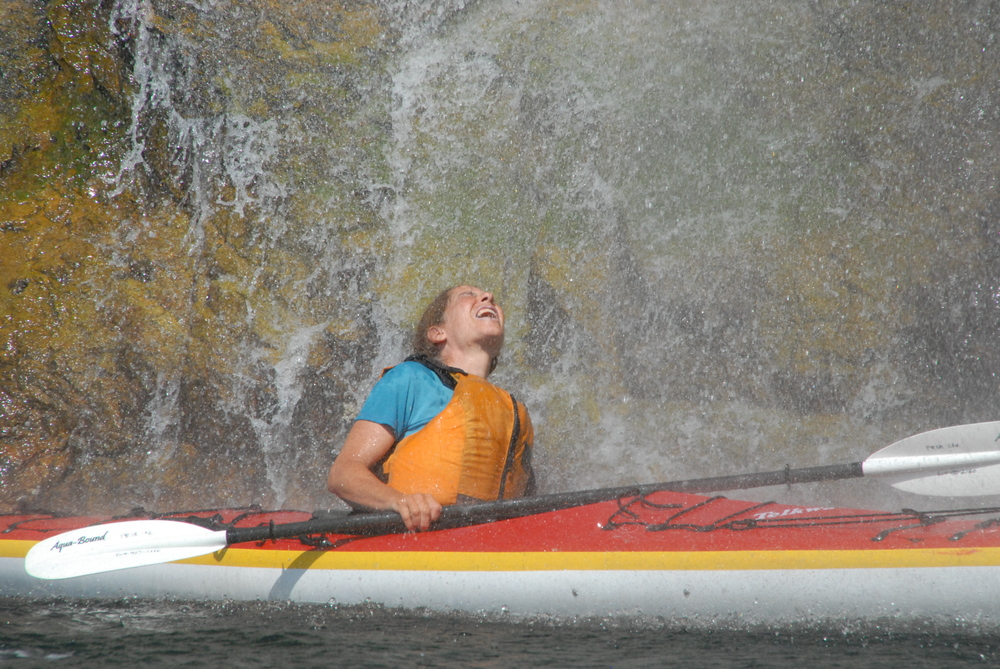 photo by Tracy Mallory
photo by Tracy Mallory
The Sunshine Coast is just a relatively short drive and an even shorter flight northwest of Vancouver. It’s easily accessible but still feels somewhat remote -- most of the coast above Powell River, the “urban” center of the region, can only be reached by boat or float plane. Like almost all of the BC coast, it is strikingly beautiful -- islands of all sizes covered in Douglas fir, hemlock, and cedar; narrow inlets and fjords indenting the rugged coastline; and jagged snow capped mountains in the distance framing long views across wide sounds
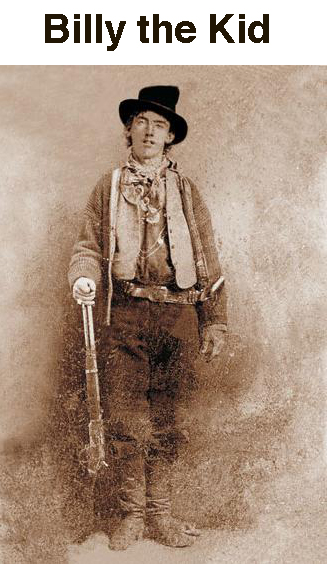 Because of a silver-colored horse named Concho and a notorious outlaw named Billy the Kid, my tether to the digital world got snapped. And, as it turned out, I was grateful. I’ll explain.
Because of a silver-colored horse named Concho and a notorious outlaw named Billy the Kid, my tether to the digital world got snapped. And, as it turned out, I was grateful. I’ll explain.
It all started about a year ago, when I heard about an intriguing trail riding vacation called the Tunstall Ride. It had a Billy the Kid theme and was based in southern New Mexico, major Kid territory. According to Beth MacQuigg, the ride manager, there would be three days of trail riding and we’d be traveling over some of the same rangeland that the Kid would have ridden over.
Riders would be housed in guest rooms on a private ranch adjacent to the property where the Kid once worked as a ranch hand. Known as the Tunstall Ranch, it was owned by his boss, Englishman John Henry Tunstall. Billy was riding with him one day when Tunstall was gunned down, was the first person to be murdered during the infamous Lincoln County War.
That bloody conflict aside, the land we’d be riding over was reputed to be some of the Kid’s favorite country. Beth told me that most people would be bringing their own horses, but for those of us who were horseless, like me, rental horses could be provided. As someone who loves horses, trail riding, and Western lore, the Tunstall Ride sounded immensely appealing, and I signed up. I signed my husband up, too. Though Terry doesn’t ride, he could hang out at the ranch and join us for meals and explore the historic sites with us that we’d be visiting without the horses.
by Ellen Barone
[this is the final article in our SPOTLIGHT ON PORTUGAL series this week... ]
When the only vices of a place involve food and wine, booking a flight is a no-brainer according to my travel rules. Throw in sandy beaches, cultural riches, mild climate, a lost-in-time pace of life, and an inexpensive cost of living, and you won me over, Portugal.
On a recent visit to the northern wine country, I spent four delicious days table-hopping from hearty lunches, rustic meals featuring unpretentious fare and artisanal feasts prepared by innovative young chefs who bring a creative flare to traditional specialties. Each meal was paired with the region’s fresh, light, aromatic wines known collectively as Vinho Verdes.
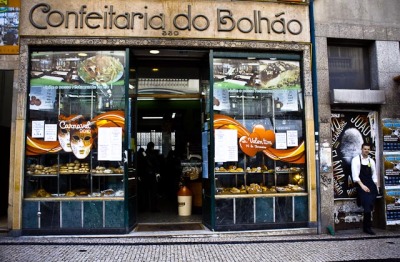 In Porto, the Confeitaria do Bolháo (Rua Formosa 339) proves it doesn’t have to be expensive to be good. I’d wandered into the café for an espresso and to sit out an afternoon rain shower. But I quickly upgraded my order to the meal of choice among the elderly patrons in wool caps and sturdy shoes who packed the place. “Yes, it’s fantastic”, said the waiter, when I asked to have what the couple at the table beside me were so obviously enjoying – a plentiful plate of crispy sardines, crusty bread, a delicious stew of red beans and rice and a carafe of robust red wine. Total bill: 7-euros. Nice.
In Porto, the Confeitaria do Bolháo (Rua Formosa 339) proves it doesn’t have to be expensive to be good. I’d wandered into the café for an espresso and to sit out an afternoon rain shower. But I quickly upgraded my order to the meal of choice among the elderly patrons in wool caps and sturdy shoes who packed the place. “Yes, it’s fantastic”, said the waiter, when I asked to have what the couple at the table beside me were so obviously enjoying – a plentiful plate of crispy sardines, crusty bread, a delicious stew of red beans and rice and a carafe of robust red wine. Total bill: 7-euros. Nice.
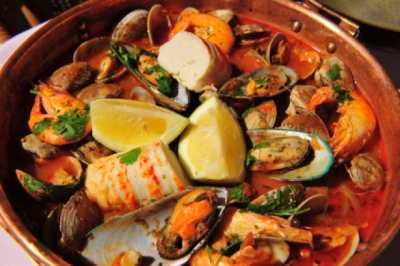 A perfect example of the region’s rustic fare is Restaurante Páteo das Figueiras (Rua do Além 257), a homey establishment near Braga which serves exquisite local cuisine family-style in a simple and cozy room. The caldierada, a stew consisting of a variety of fish and shellfish with potatoes, tomato and onion, scooped up with a garlicky bread, was delicious.
A perfect example of the region’s rustic fare is Restaurante Páteo das Figueiras (Rua do Além 257), a homey establishment near Braga which serves exquisite local cuisine family-style in a simple and cozy room. The caldierada, a stew consisting of a variety of fish and shellfish with potatoes, tomato and onion, scooped up with a garlicky bread, was delicious.
words + photos by Katherine Braun Mankin
IN THE MIDDLE OF NOWHERE
I stared out into the empty plain of the Gran Sabana and thought about my husband, Don. I was glad that I wasn’t with him. He was at that moment climbing a tepui, a rocky, table top mountain. I didn’t want to climb the tepui. I don’t like walking uphill. I don’t like cold or wet places, and I especially don’t like cold and wet together. Sleeping on the ground hurts my back, and I prefer indoor plumbing to more rustic alternatives. And I’m a wilderness wimp. So, instead of hiking a tepui, I went to the middle of nowhere.
Photo Slide Show by Katherine Braun Mankin
The Gran Sabana in the southeastern corner of Venezuela, bordering Brazil, is a high plateau of wide savannah interrupted only by clumps of jungle, shadowy outlines of distant tepuis and many waterfalls. My husband and I were in Venezuela at the invitation of Venezuela Elite, a tour operator offering trekking, biking and cultural trips in the region and elsewhere (www.venezuelaelite.com). While my husband climbed the tepui, I spent a week in the Gran Sabana with a guide and a driver, staying at eco-camps or small hotels (indoor plumbing !), going on relatively easy hikes and visiting the indigenous people of this area. For a week I had the pleasure of looking out at landscapes that stretched endlessly into an uncluttered vista of land, sky and water.
words + photos by Rachel Dickinson
When I travel I always carry a little black moleskin journal that flips open like a reporter’s notebook. I also buy a new pen before a journey that I slip through the elasticized band that encircles the journal. This is my traveling kit – one in which I make notes in longhand and draw sketches to illustrate what I’m seeing. I imagine what I record is like a kindergarten version of what Mark Twain or Robert Louis Stevenson – two great 19th century diarists – might have recorded.
Santa Fe to Tucson in a one-day mad dash
Jack the Pup is riding shotgun on the roommate’s lap as we head west on I-40 at nine AM, planning to reach my sister’s house in Tucson in time for dinner. The first miles across the desert, numbingly familiar by now, yield as this time we’d planned a back roads excursion south, just across the Arizona border. The map shows one of those intriguing dotted lines, a scenic highway, just what we need after hours of rumbling 18-wheelers…
To ready ourselves for adventure, we stop in Gallup at what is now our favorite eatery: Earl’s Family Restaurant. Here in Navajo Country Earl’s is shopping center, family reunion, and good staple New Mexico food: guacamole, burritos and so forth. Outside, Navajo craftspeople jam the sidewalk with their tables; inside, they patrol the aisles, silently holding out pins, bracelets, necklaces, and, in a departure from the usual, a pair of weird lamps, the ceramic bases coated with sand and then painted with iconic motifs. I’m charmed, I must buy at twenty dollars each, then wonder, too late, where in the world I’m going to put them….
by Bethany Ball
Most people associate North Michigan with snow, ice and long difficult winters. But for me, the area is associated with Moon Palace, the summer cottage of my parents' best friends, where we spent nearly every weekend of my childhood. We passed the four-hour Friday-night drive listening to music – show tunes, folk songs, and NPR– until I’d finally drop off to sleep.
To me, coming from the city, it was as remote as the moon itself. First and foremost there were no other children—most parents waiting until real summer when the pool opens—and I am an only child. I spent my days reading Frank Baum's Oz series, which I was obsessed with, or listening to Neil Diamond tapes on my Walkman. This tiny tape deck with black headphones was, to me, probably the greatest invention ever.
When the weather was warm, I would prowl around the dense virgin forests that surrounded the cottage; I knew every inch of them. I dragged a large section of nailed-together two-by-fours together into a thicket of bushes and ferns. This was my house. If it rained, I would hide under the overturned canoe that was dragged up from Moon Lake. Once underneath the canoe, I imagined I could live there, though the ground was icy, and I'd have to wear my winter snowmobile boots ( great big ugly boots that I wouldn't be caught dead in if I were in the city but which kept my feet warm and dry in the forest). I caught frogs and named them: Fred, Franny, Frank, and Fran. Even though it was summer, ice formed in the night and early morning, before the sun had time to melt it. I walked along the ice’s edge, my feet breaking through to the shallow water below, the snowmobile boots surprisingly effective at keeping my feet dry.
Boycott Mexico? No, boycott American stupidity
The market vendor handed me the sack of fresh-made potato chips she’d just hauled out of the fryer, and motioned that I should add a bit of salt and lime juice. I told her thanks in my serviceable Spanish (mil gracias, senora) and did as instructed. Then I gently lifted one chip from the sack and took an experimental bite. I’d never tasted made-on-the-spot potato chips until my wife and I wandered by this food cart in the market in Patzcuaro, Michoacan, Mexico.
It was the best potato chip ever.
Too bad that one potato chip had more mental acuity than some of our own countrymen. Don’t go to Mexico and spend your money, urge the Americans United to Halt Tourism in Mexico, on the novel theory that the way to discourage Mexican immigrants from coming here to earn money is for us to not go there and spend money.
French Camp Failure
by Jules Older
As Effin and I left Vermont for French Immersion Camp in Quebec, I felt scared.
I had reason for fear. I nearly flunked French in high school. I did flunk Latin, got a D in German, just squeaked by Spanish. I kept switching languages in the forlorn hope I'd find one I was good at. I never did.
